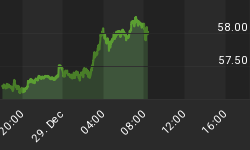Greenspan is concerned about 'froth' according to this article in the New York Times.
"Without calling the overall national issue a bubble, it's pretty clear that it's an unsustainable underlying pattern," Mr. Greenspan told the Economic Club of New York at the Hilton New York hotel in Midtown.
Mr. Greenspan emphasized that he sees no sign of a nationwide housing bubble, but he acknowledged concerns over "froth" in the market and pointed to a big increase in speculation in homes - particularly in second homes. As a result, he said, there are "a lot of local bubbles" around the country.
This is an interesting reversal given his stated position that bubbles could only be detected in hindsight. Let's summarize the history of Greenspan's beliefs in ability to detect bubbles.
1996 - Greenspan warns about irrational exuberance in the stock market
2000 - Greenspan embraces the "productivity miracle" and says there is no stock market bubble.
2000 - The full FOMC minutes just now released after 5 years show that the FED was openly discussing bubbles even though Greenspan was publicly denying them
2001 - Greenspan said bubbles can only be detected in hindsight
2004 - Greenspan says there is no housing bubble
2005 - Greenspan says there is no national housing bubble even though he admits we have "an unsustainable underlying pattern", "froth", and "it's hard not to see that there are a lot of local bubbles."
Let's review the latest home sale figures just released for April 2005.
According to the National Association of Realtors sales of existing U.S. homes rose 4.5% in April to a record seasonally adjusted annual rate of 7.18 million. It was a new all time record. The previous record of was 7.02 million sales, set in June 2004. The inventory of unsold homes rose 8.1% to 2.48 million, a 4.2-month supply at the April sales' rate.
Sales of new U.S. homes also hit a new all time record in April, record rising 0.2% to a seasonally adjusted annual rate of 1.316 million according to the US Census Bureau.
"The median sales price of new houses sold in April 2005 was $230,800; the average sales price was $283,500. The seasonally adjusted estimate of new houses for sale at the end of April was 440,000. This represents a supply of 4.1 months at the current sales rate."
It seems the FED is getting more than a bit concerned about this trend as indicated in the latest minutes: "Home sales and other indicators of activity in the residential real estate market remained at very high levels," the minutes said. "House price appreciation was expected to moderate over coming quarters, but a number of local markets were still regarded as 'hot' with signs of possible speculative excess."
Let's see, we have an all time record numbers of sales, people flipping houses like mad, 10 years worth of condo units coming on the market in Miami within the next year, people putting real estate into their IRAs, and 36% of homes sold last year were second homes and/or for "investment". Yes, Chairman Greenspan, I would concur that we are in "an unsustainable underlying pattern" with a "lot of local bubbles" to boot.
Now the interesting thing to me is that in spite of record sales, we still have 4.1 months of supply and builders are still building as fast as they can. One question: What happens to monthly supply when we no longer have record sales month after month?
















